

House Under the Rock
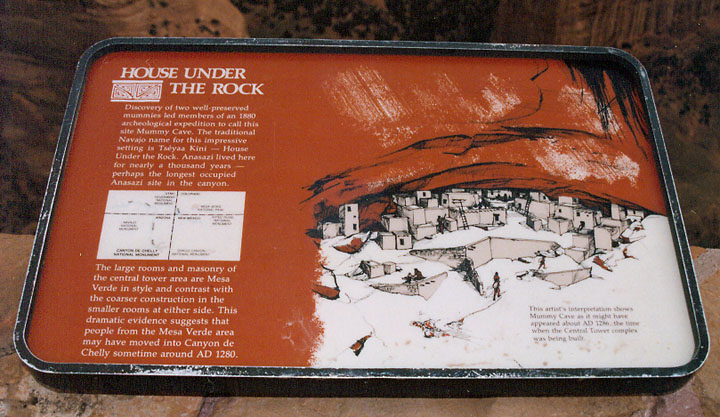
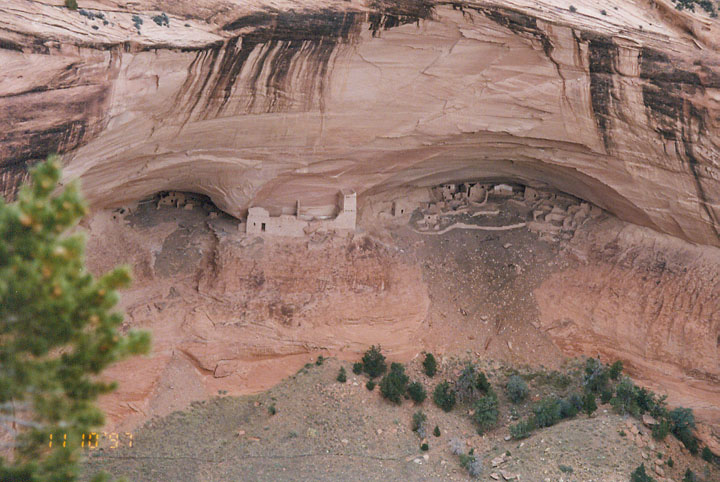
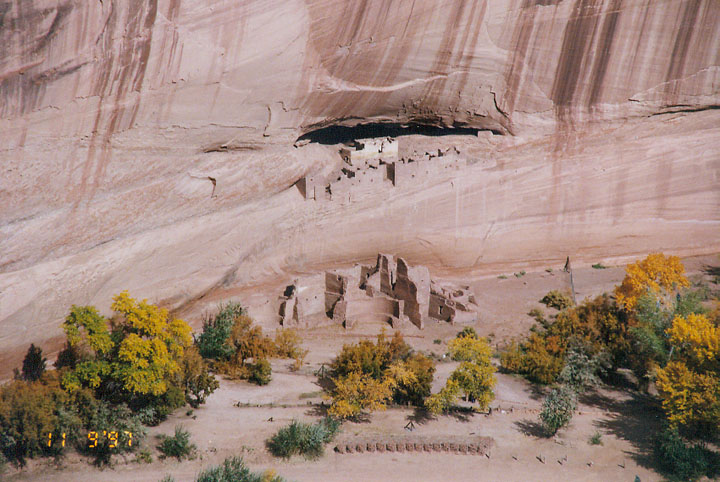
The prehistoric house of the Pueblo Indians of the southwestern United States, built along the sides or under the overhangs of cliffs Such masonry cliff dwellings are associated with the Classic Pueblo, or Pueblo III, cultural period after which the Pueblo moved farther south and built the pueblo villages that they still inhabit.

The ancestors of the Pueblos were nomadic Indians of the Basket Maker culture.
When they became sedentary and began to cultivate corn, they also began to build
circular pits as storage bins. When the bins were later reinforced with stone
walls and covered with roofs, some Indians began to use these enclosures as
houses. Finally, the Indians became proficient enough in the dry farming
required in this arid climate to live completely from the corn (maize), squash,
beans, and cotton they grew and to establish permanent communities. At that
point they began to build their houses above ground.
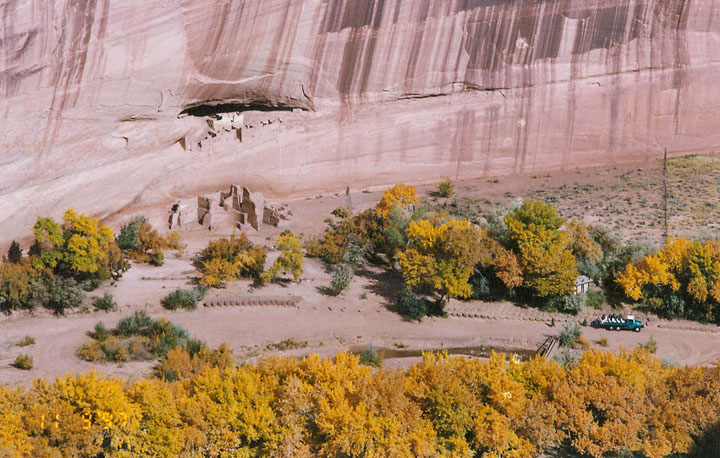
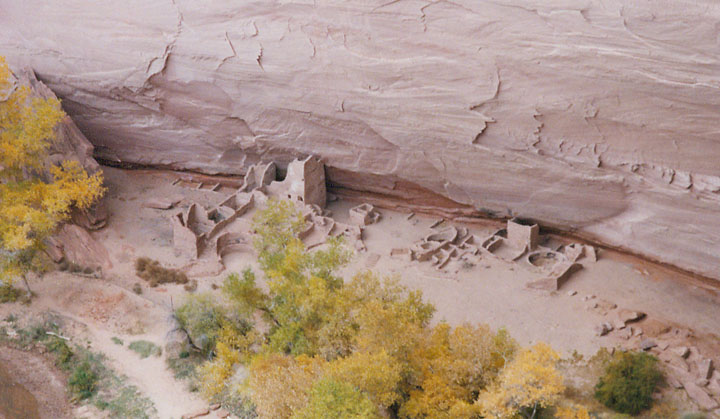
White House
The cliff dwellings are the culmination of this architectural development; the
use of hand-hewn stone building blocks (the principal construction material) and
adobe mortar was unexcelled even in later buildings. Ceilings were built by
laying two or more large crossbeams and placing on them a solid line of laths
made of smaller branches. The layers were then plastered over with the same
adobe mixture frequently used for the walls. Edifices several stories high were
built with succeeding stories set back, creating a row of terraces on each level
that gives the structure the appearance of a ziggurat (ancient Babylonian temple
tower).
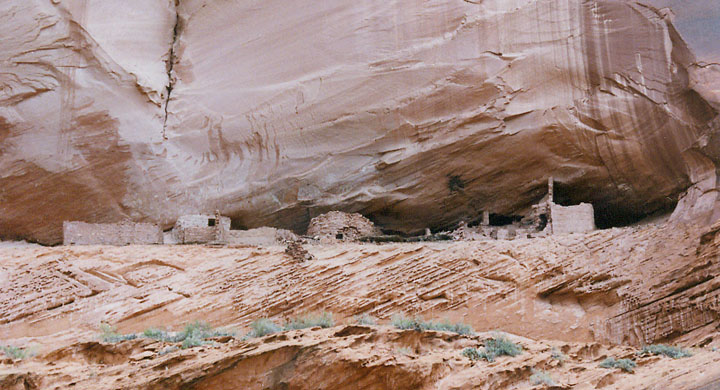
Residential rooms measured about 10 by 20 feet (3 by 6 metres). Entrance to
ground-floor rooms was by ladder through a hole in the ceiling; rooms on upper
floors could be entered both by doorways from adjoining rooms and by a hole in
the ceiling.
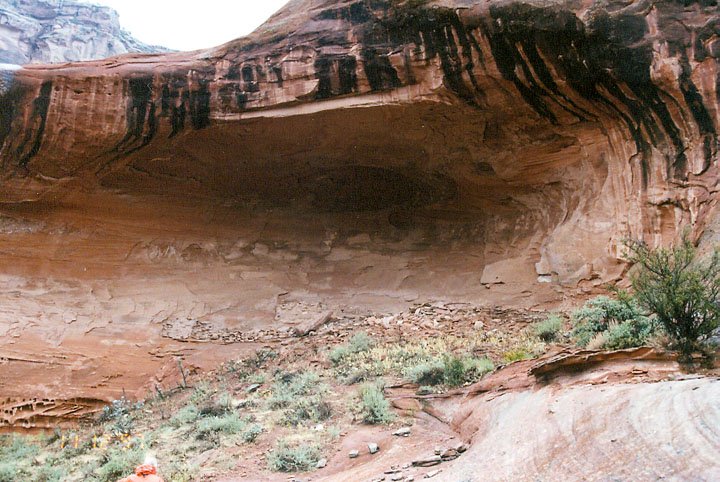
large cliff overhang

It is thought that the Pueblo Indians began to build these cliff dwellings in
about AD 1000, as a defense against northern tribes of Navajo and Apache, who
were invading their territory. In addition to the natural protection of the
cliff, the absence of doors and windows to the rooms on the ground floor left a
solid outer stone wall that could be surmounted only by climbing a ladder, and
the ladders could easily be removed if the town were attacked. Many smaller
communities joined together to form the large towns built beneath the cliffs.

At the end of the 13th century, these cliff dwellings were deserted by the
inhabitants. Two factors account for the move: an examination of tree trunks
indicates a severe drought between 1272 and 1299; and it is thought that there
was internal dissension between tribes in these large urban cliff pueblos. Thus,
smaller pueblos were created in the south near better water sources.

![]()
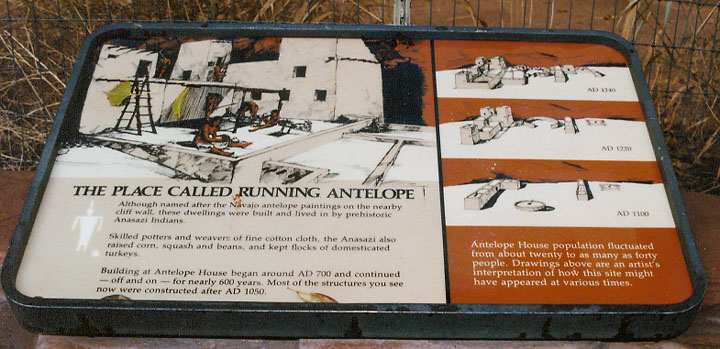
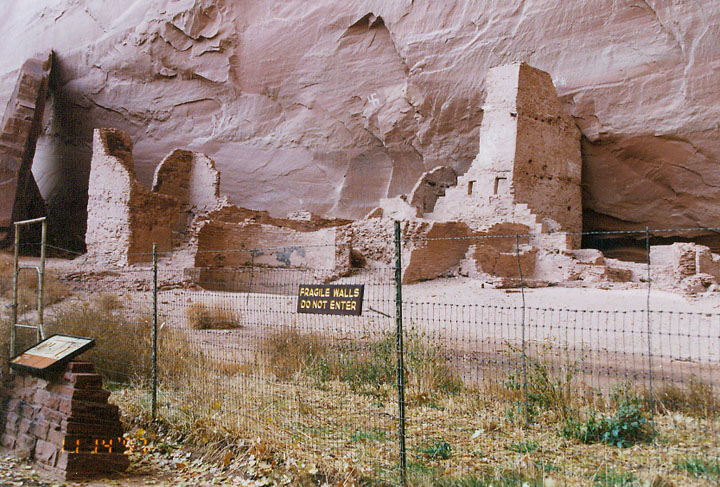
![]()
Canyon Petroglyphs

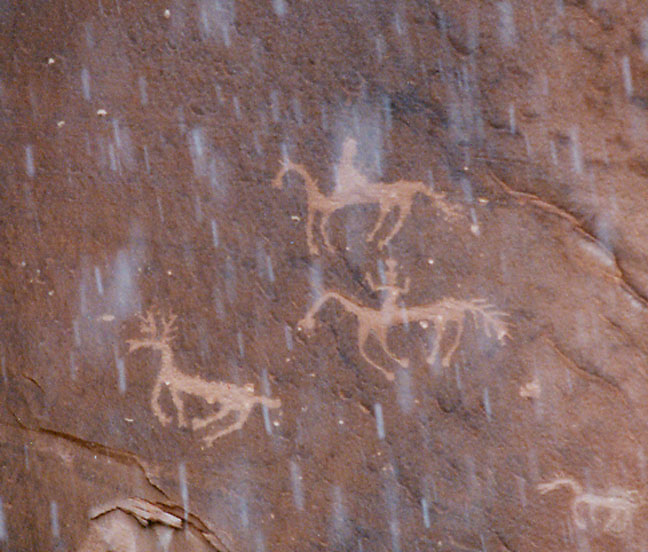
partly obscured by bird droppings
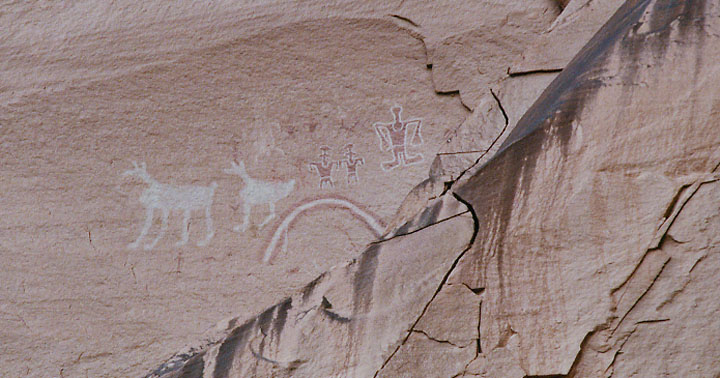
![]()
![]()